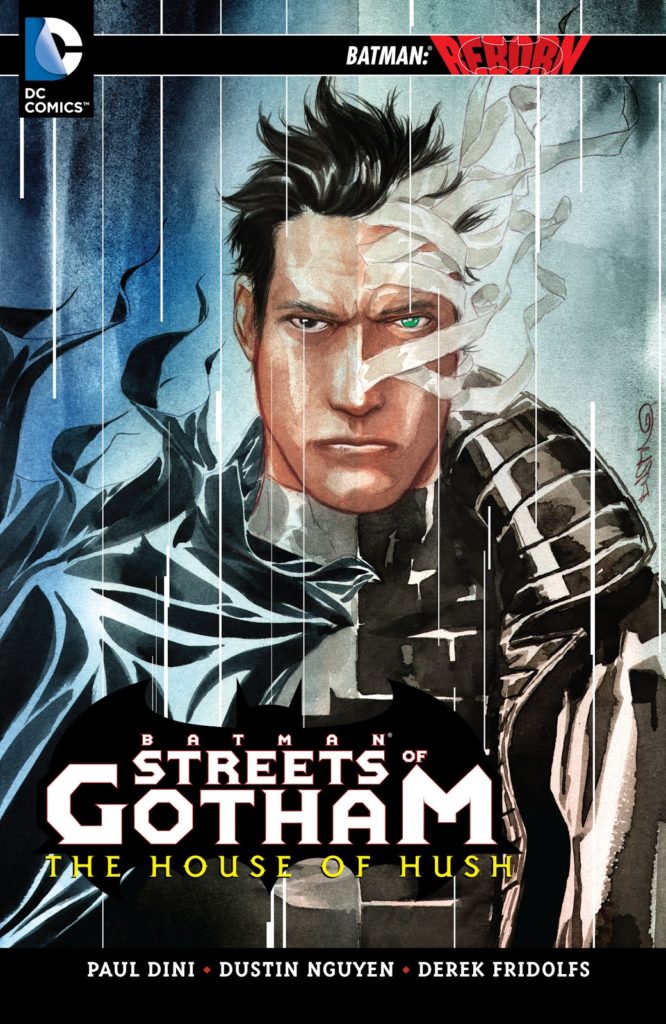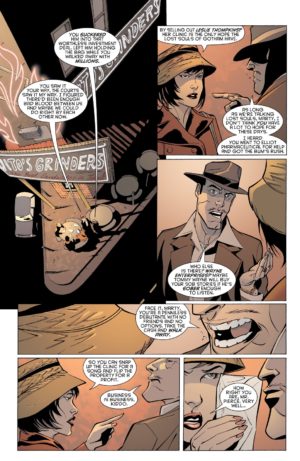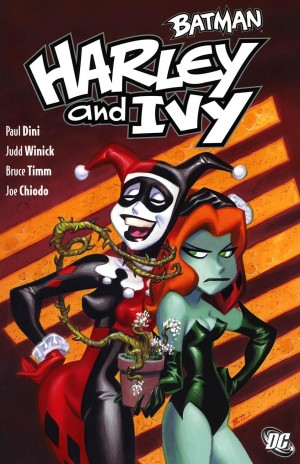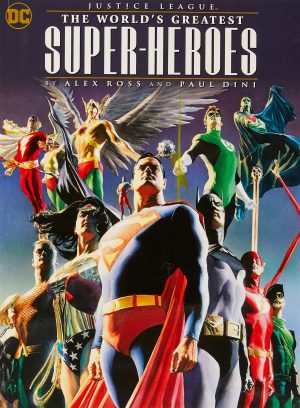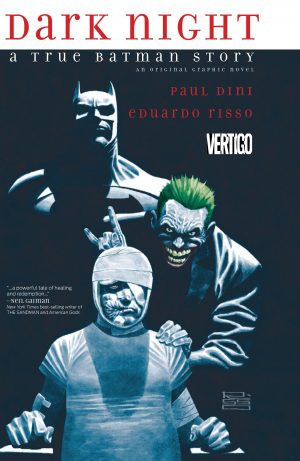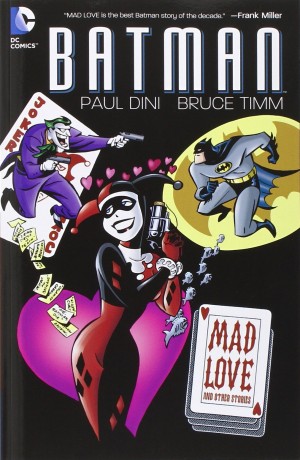Review by Karl Verhoven
The House of Hush occurs when Bruce Wayne/Batman was known to have disappeared by the superhero community. That left an opportunity for Hush, Thomas Eliot, a villain who knew Wayne’s crimefighting identity, and who’s surgically altered his appearance to resemble Wayne. It suits various interests to have Wayne present and presiding over his companies, so while in Hush Money Eliot originally set up the masquerade for his own purposes, it’s been permitted to continue under controlled conditions, a situation that rankles Eliot. Still, Hush was once the mastermind able to manipulate all Batman’s villains, so surely he has an escape route?
As before, while Batman features to mop up messes, Paul Dini is more inclined to leave the narration to the villains, taking a look at what they’re up to and what they’re thinking. Wheels revolve within wheels in Dini’s Gotham, and while Hush plots to escape his self-engineered prison, others have their own targets in mind, and it’s amusing how Dini transforms some of Gotham’s third rate criminals into people of interest. Hush’s perception of self-worth and his snobbery provides for a fascinating study, but a big change of circumstances affects his plans halfway though. The result is an extremely layered intervention dropping all the way back to the Wayne family’s previous generation, which Dini has frequently visited in his Batman stories.
Once again, we should be grateful to have Dustin Nguyen illustrating every page, his carefully considered layouts running the gamut from delicate to unnerving, and as a complete bonus he throws in a wonderful Joker montage. The villains he works with are largely of a lesser calibre, but they’re all given a chilling depiction, Nguyen capable of making them all sinister. He manages the same for Gotham in general. The past is important, provided with a sepia wash by colourist John Kalisz to distinguish it.
There’s a very telling line uttered as Dini enters the final run-in. “I did what I had to do. You would have done the same given half a chance” is poetically and ethically simple, yet it’s also the line separating the heroes from the villains. Whether intentional or coincidence, it’s the justification so many of Dini’s villains would resort to. He uses several non-entities and long-forgotten types, all to amazing effect, and Dini even bequeaths Gotham a creative new monster in Bedbug, far more dangerous than his name would have you believe, and very troublesome. The primary tormentor, though is Hush, the collection having his name in the title, and his family is entwined with the Waynes going back a generation, which is when much of what Dini unravels began. The closure is grim, twisting and unexpected, and just how clever it all is will be apparent to anyone who’s also read Grant Morrison’s Batman. How Dini logs into that is fine plotting.
Dini takes his leave of Gotham after an under-appreciated run overall, his astute mind never lacking for something interesting to say about whatever villain he uses, if in this series largely staying clear of Batman himself. That alone makes his work worth looking out, and Nguyen raises the stakes higher.
